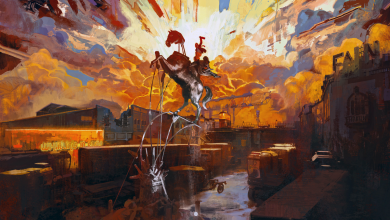Transgender Representation in Film and Television
Let’s have a conversation. The one you have with a friend after philosophy class over tea and use words like “existential truth” or “ normative discourse.” Except we’re not at a café conversing over tea. You’re on your computer with multiple Facebook, Netflix, Twitter tabs and a half written Word document. For ten minutes, lets recreate that café atmosphere. Grab a hot cup of tea, shake your head in contention or snap your fingers in agreement. Let’s have an important discussion that no one is talking about: transgender representation in television and film.
In 2014, Transgender representation in television and film reached new levels. On June 9th, Laverne Cox, who plays Sophia Burset in the hit show Orange is the New Black, landed the cover of Time, making her the first transgender woman to be on the cover of a major publication. She was nominated for an Emmy among many other awards. Amazon’s first original series, Transparent, about a transgender woman, won two Golden Globes for best television series and best actor. Glee developed a new arch about main character, Coach Beiste, transitioning from female to male. Jared Leto won an Oscar for his portrayal of Rayon in Dallas Buyers Club, a transgender woman living with HIV. In the final season of Sons of Anarchy, main character, Tig, falls in love with Venus Van Dam, a transgender sex worker. Lastly, Eddie Redmayne was cast as Lili Elbe in the highly anticipated The Danish Girl.
With mainstream media reaching new strides for transgender acceptance, the real world is still barely catching up. On average, transgender people have a 1 in 12 chance of being murdered and 75% of transgender people murdered from hate crimes are people of color.
What does this drastic dichotomy tell us? Cisgender people’s compassion for transgender rights is limited to the glamorization of Hollywood. When the screen turns black, Jared Leto takes off his wig, Jeffrey Tambor wipes off his makeup, and Eddie Redmayne takes off his dress. They’ll go on living as white cisgender men and the privileges that entails. They’ll win well-deserved Oscars and a room full of pretentious white people pat themselves on the back for being great human beings. But what has been accomplished? Has there been any real tangible change? To put things into perspective, we’re still debating whether transgender people can use the public restrooms they prefer. They’re bullied, harassed and belittled everyday. Thousands of teens like Leelah Alcorn and Taylor Alesana see suicide as the only way. They feel hopeless and alone. How can we change these statistics? How can we learn from Alcorn’s death, move forward, progress and become a better more understanding people?
Of the roles I mentioned earlier, all but one are played by male actors. What are the effects of this? For years “cross dressing” was used as a comedic device. My childhood was shaped by shows like Boy Meets World, Full House, and as I grew older Family Guy, the latter portraying transgender people as monsters. Although there is transgender representation, what kind of representation is it? Cox’s role in Orange is the New Black not only gives representation, but gives the transgender community a voice. Sophia Burset is not just an inmate, she is not just a woman of color, and more importantly she is not just a trans character. She is Sophia: a character with different layers and dimensions, good and bad. She is a human being. This is in part because of Cox’s agency over the character.
The transgender community should be given agency over this new wave of transgender representation in film and television. I argue that transgender characters should almost always be played by transgender actors. There are numerous transgender actors denied roles because of their gender identity, yet we give awards to cisgender actors who play them. Transgender actors are deprived the right to self-representation. When transgender actors can play transgender roles, the character won’t be defined by their gender identity, but by who they are. They won’t just be a transgender character. There’s a plethora of stories that need to be told that are not limited to the transitioning narrative we often see. Stories about adventure, falling in love, breaking up, supernatural forces, comedy and much more. We can start seeing them as human beings deserving of respect. So when a 16 year old transgender female turns on the tv, she can see there is hope, she is normal, she is beautiful and most importantly she is worthy.
It wasn’t too long ago that female roles were performed by male actors because women were forbidden to perform on stage. It wasn’t too long ago that actors painted their face black to play people of color. We’ve acknowledged our wrongdoings and corrected them. We now need to move past this chapter of American superiority.





